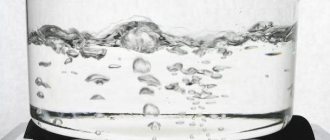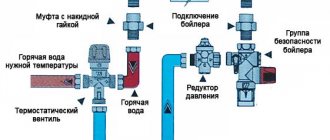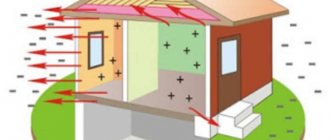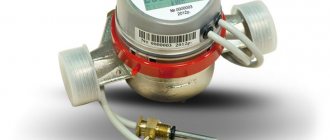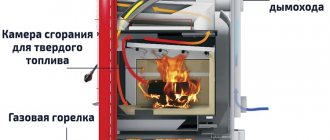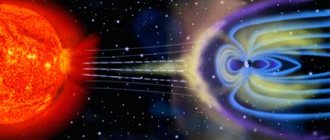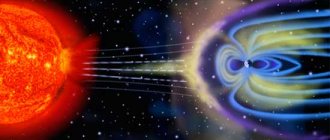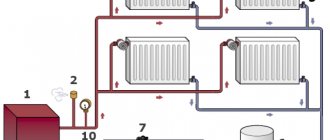The procedure for calculating heating in residential buildings depends on the availability of heat meters and on how the house is equipped with them. Often, after the next payment of large bills for heating, residents of multi-storey buildings think that somewhere they were deceived. In some apartments you have to freeze every day, in others, on the contrary, they open the windows to ventilate the premises from the intense heat. In order to completely rid yourself of the need to overpay for excess heat and to save money, you need to decide how exactly the calculation of the amount of heat for heating the home must be performed. Simple calculations will help to solve this, by means of which it will become clear how much heat entering the batteries of houses must have.

Legislative basis for calculating heating
Changes in housing legislation
First of all, you need to find out on what grounds calculations for heat supply are performed. To do this, you should study the law on payment for heating. Its last revision is No. 354 dated 06/05/2011. Its clauses describe in detail the procedure for calculating payment.
Compared to the old version, the procedure for calculating amounts for the services provided, as well as the forms of concluding an agreement and receipts, have undergone changes. The consumer, before calculating the additional payment for heating, needs to find out the type of arrangement of his residential building:
- A common house metering device for the consumed heat energy has been installed, but there are none in the apartments;
- Along with the general house meter, an individual energy meter is installed in the apartment;
- There are no devices for controlling the amount of consumed thermal energy in the house.
Only after that you can find out how the payment for heating is calculated. In addition, according to Decree No. 354, payment for consumed heat energy is divided into two types - for a specific living space and as general household needs. The latter include heating staircases, basements and attics of buildings. Therefore, before calculating the payment for heating, you should ask the management company for the total area of these premises, as well as the tariff for maintaining the desired temperature level in them.
The same information should be displayed in the receipts received - there will be 2 points for payment, which will give the total amount. Typically, the rates of payment for heating non-residential premises are higher than residential ones. But when dividing the total amount for all apartments in the house, their bleeding in the receipt decreases.
Since the payment for heating residential and non-residential premises is considered, it is necessary that this information be spelled out in the contract with the management company.
Heat meters
In order to calculate thermal energy, you need to know the following information:
- Liquid temperature at the inlet and outlet of a certain section of the line.
- The flow rate of the liquid that moves through the heating devices.
The flow rate can be determined using heat meters. Heat metering devices can be of two types:
- Vane counters. Such devices are used to meter heat energy, as well as hot water consumption. The difference between such meters and cold water meters is the material from which the impeller is made. In such devices, it is most resistant to high temperatures. The principle of operation is similar for the two devices:
- The rotation of the impeller is transmitted to the accounting device;
- The impeller starts rotating due to the movement of the working fluid;
- The transmission is carried out without direct interaction, but with the help of a permanent magnet.
Such devices have a simple design, but their response threshold is low.And also they have reliable protection against distortion of readings. The anti-magnetic shield prevents the impeller from being braked by the external magnetic field.
- Devices with a differential recorder. Such counters work according to Bernoulli's law, which states that the rate of movement of a liquid or gas flow is inversely proportional to its static movement. If the pressure is recorded by two sensors, it is easy to determine the flow in real time. The counter implies electronics in the construction device. Almost all models provide information on the flow rate and temperature of the working fluid, as well as determine the consumption of thermal energy. You can configure the work manually using a PC. You can connect the device to a PC via the port.
Many residents are wondering how to calculate the amount of Gcal for heating in an open heating system, in which hot water can be taken off. Pressure sensors are installed on the return pipe and the supply pipe at the same time. The difference, which will be in the flow rate of the working fluid, will show the amount of warm water that was spent for domestic needs.
Question answer
Section "COGENERATION
Question What is the specific consumption of natural gas (GOST) per 1 kW * hour of generated electricity in a gas piston engine-generator?
Answer: From 0.3 to 0.26 m3 / kW * hour, depending on the efficiency of the installation and the calorific value of the gas. Currently, the efficiency can vary from 29 to 42-43% depending on the equipment manufacturer.
Question: What is the electricity / heat ratio of the cogenerator?
Answer: For 1 kW * hour of electricity, you can get from 1 kW * hour to 1.75 kW * hour of thermal energy, depending on the efficiency of the installation and the operating mode of the engine cooling system.
Question: When choosing a gas piston engine, what is preferable - the rated speed of 1000 or 1500 rpm?
Answer: The specific cost indicators of the engine-generator of 1500 rpm are lower than those of similar ones in power from 1000 rpm. However, the cost of "owning" a high-speed unit is approximately 25% higher than "owning" a low-bit unit.
Question: How does a gas piston engine-generator behave during power surges?
Answer: The gas piston engine-generator is not as "high-spirited" as its diesel generator counterpart. The average allowable power surge limit for a gas piston engine is no more than 30%. In addition, this value depends on the load conditions on the engine prior to the power surge. A stoichiometric, non-turbocharged engine is more dynamic than a turbocharged and lean engine.
Question: How does the quality of gas fuel affect the mode of a gas piston engine?
Answer: Natural gas in accordance with the current GOST has an octane equivalent of 100 units.
When using associated gas, biogas, and other methane-containing gas mixtures, gas engine manufacturers estimate the so-called "knock-index" "detonation index", which can vary significantly. A low knock-index value of the gas used will cause the engine to detonate. Therefore, when assessing the possibility of using this gas composition, it is mandatory to obtain an approval from the manufacturer, which guarantees the operation of the engine and the power output by the engine.
Question: What are the main modes of operation of a cogenerator with an external network?
Answer: Three modes can be considered:
1. Autonomous work (Island mode). There is no galvanic connection between the generator and the mains.
Advantages of this mode: does not require coordination with the power supply organization.
Disadvantages of this mode: Requires a qualified engineering analysis of the consumer's loads, both electrical and thermal.It is necessary to exclude the discrepancy between the selected power of the gas-piston generator and the mode of starting currents of the Consumer's motors, other abnormal modes (short circuits, the influence of non-sinusoidal loads, etc.) that are possible during the operation of the facility. As a rule, the selected capacity of an autonomous station should be higher in relation to the average load of the Consumer, taking into account the above.
2. Parallel work (Parallel with grid) - the most used mode of operation in all countries, except Russia.
The advantages of this mode: The most "comfortable" mode of operation of a gas engine: constant power take-off, minimum torsional vibrations, minimum specific fuel consumption, coverage of peak modes due to the external network, return of funds invested in the power plant through the sale of electrical energy unclaimed by the consumer - the owner of the Facility. The rated power of the gas piston unit (GPA) can be selected according to the average power of the consumer.
Disadvantages of this mode: All the advantages described above, in the conditions of the Russian Federation, turn into disadvantages:
- significant costs for the technical conditions for connecting the "small" energy facility to the external network;
- when exporting electricity to the external network, the volume of funds from its sale does not even cover the costs of the fuel component, which undoubtedly increases the payback period.
3. Parallel operation with an external network without exporting electricity to the network.
This regime is a healthy compromise.
The advantages of this mode: The external network plays the role of "backup"; GPU - the role of the main source. All starting modes are covered by an external network. The rated power of the GPU is determined based on the average power consumption by the electrical consumers of the facility.
Disadvantages of this mode: The need to coordinate this mode with the power supply organization.
How to convert m3 of hot water to gcal
They account for 30 x 0.059 = 1.77 Gcal. Heat consumption for all other residents (let there be 100): 20 - 1.77 = 18.23 Gcal. One person accounts for 18.23 / 100 = 0.18 Gcal. Converting Gcal to m3, we get hot water consumption 0.18 / 0.059 = 3.05 cubic meters per person.
Confusion often arises when calculating monthly payments for heating and hot water. For example, if in an apartment building there is a common heat meter, then the calculation with the heat energy supplier is carried out for the consumed gigacalories (Gcal). At the same time, the hot water tariff for residents is usually set in rubles per cubic meter (m3). To understand payments, it is useful to be able to convert Gcal to cubic meters.


It should be noted that heat energy, which is measured in gigacalories, and the volume of water, which is measured in cubic meters, are completely different physical quantities. This is known from the high school physics course. Therefore, in fact, we are not talking about converting gigacalories to cubic meters, but about finding a correspondence between the amount of heat spent on heating water and the volume of hot water obtained.
By definition, a calorie is the amount of heat required to heat one cubic centimeter of water by 1 degree Celsius. A gigacalorie, used to measure heat energy in thermal power and utilities, is a billion calories. In 1 meter there are 100 centimeters, therefore, in one cubic meter - 100 x 100 x 100 = 1,000,000 centimeters. Thus, to heat a cube of water by 1 degree, it will take a million calories or 0.001 Gcal.
The temperature of hot water flowing from the tap must be at least 55 ° C. If the cold water at the entrance to the boiler room has a temperature of 5 ° C, then it will need to be heated by 50 ° C. Heating of 1 cubic meter will require 0.05 Gcal. However, when water moves through the pipes, heat losses inevitably occur, and the amount of energy spent on providing hot water supply will in fact be about 20% more.The average standard of heat energy consumption for obtaining a cube of hot water is taken equal to 0.059 Gcal.
Let's look at a simple example. Suppose that in the inter-heating period, when all the heat goes only to provide hot water supply, the heat energy consumption according to the readings of the general house meter was 20 Gcal per month, and the residents, in whose apartments water meters are installed, consumed 30 cubic meters of hot water. They account for 30 x 0.059 = 1.77 Gcal.
Fuel Consumption Calculations
To understand how much fuel resources a boiler house needs to obtain a given amount of energy, take into account:
- type of fuel;
- thermal power per hour (Gcal / hour);
- Boiler efficiency;
- regime maps (for regime and commissioning tests), SNiP tables.
- heat load on hot water supply for one hour;
- daily operation of the system in hours;
- heating season time;
- own temperatures of unheated water in winter / summer.
If there are no ready-made regime maps, the efficiency of the boiler unit is calculated according to its condition, technical parameters, features and duration of operation. Calculations of the volumes of fuel are made according to the instructions of the Ministry of Energy of the Russian Federation, where the standards for the supply of fuel to obtain the proper amount of heat are justified.


Solid fuel boiler
Fuel demand can be determined as follows:
Votp = Qotp * votp * 10-3
votp is the average rate of fuel consumption, and Qotp is the amount of heat in Gcal that goes to the heating network.
Calculation of the cost of 1 Gcal of heat.
Now comes the fun part in calculating heating costs.
We divide the heat into apartments and transfer it to money. It is in these calculations that the tricks of management companies are hidden when calculating payment for heat in apartments.
To calculate the cost of heating, we need to know:
the cost of 1 Gcal of thermal energy - heat (there is in the contract for the current year), can also be suggested by the specialists of the organization who are taking readings from you.
- the total area of your house or apartment
- living area of your house (for example 6000 square meters)
- living area of your apartment (for example 60 square meters)
- the area that is in the common possession of the residents of the house, the HOA or the management company (if located in your house).
There are many ways to calculate the cost of heating, but for you it is enough for one who gives data with an accuracy of 5-7%.
The heat from the TOTAL line (94.25 Gcal) is multiplied by the cost of 1 Gcal.
For example, let's take the cost of 1 Gcal of 1500 rubles including VAT. The cost of heat energy - heat, is different for different heat supply companies, on what it depends, read here (full article under development).
94.25 x 1500 = 141375 p.
This is the amount that the HOA or the management company must pay for heat to the heat supplier.
We divide the resulting amount by the total area of your house and multiply by the area of the apartment and the coefficient 1.12. The coefficient 1.12 is an average coefficient taking into account the area of public places - corridors, stairs, etc.
We get 141375/6000 x 60 x 1.12 = 1583.4 rubles. This is the payment for the apartment.
Accordingly, 1583.4 / 60 = 26.39 rubles, the cost of heating 1 square meter of the total area of your apartment. Now look at your receipt and if the amount to be paid for heat is within 1500 - 1650 rubles, you have not been deceived.
And the last
Comparing the cost of paying for heat by the meter for 1 square meter with neighbors from other houses, pay attention to which area they were charged for - residential or general
These amounts can be very different, without understanding, you can pretty much spoil your nerves for yourself and others.
For example, if you recalculated the amount of heat payment by the meter for the living space, you would receive 1583.4 / 38 = 41.65 rubles in old buildings, and in modern ones in general 1583.4 / 30 = 52.76 rubles.
I can imagine your shock at this difference. Therefore, be careful when talking on the bench.
Let me also remind you that we have made a calculation for a house in which there is no centralized hot water. Read about how to calculate the payment for heat in a house with hot water in the next article.
Everything about how the weather-dependent automation works. the principles of its selection, schemes, varieties, price and, most importantly, how weather-dependent automation saves heat. and also - “Who has the right to change the heat meter settings”.
What else to read on the topic:
- Apartment heat metering, apartment ...
- Does a pump with a frequency ...
- How to pay for heat using a heat meter ...
